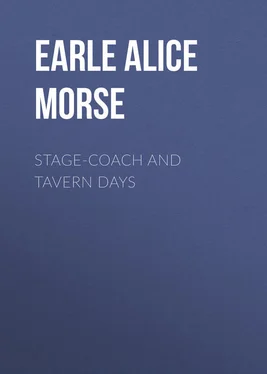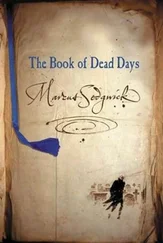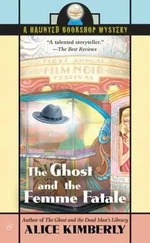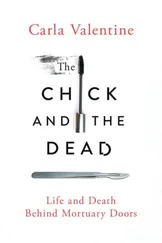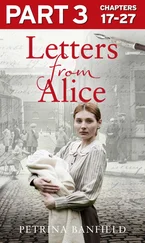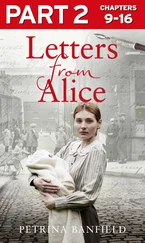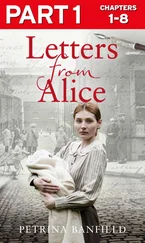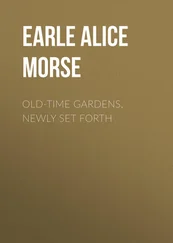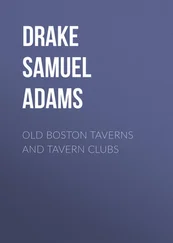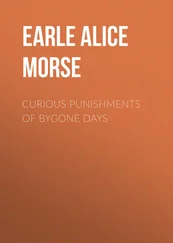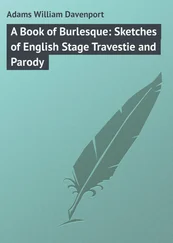Alice Earle - Stage-coach and Tavern Days
Здесь есть возможность читать онлайн «Alice Earle - Stage-coach and Tavern Days» — ознакомительный отрывок электронной книги совершенно бесплатно, а после прочтения отрывка купить полную версию. В некоторых случаях можно слушать аудио, скачать через торрент в формате fb2 и присутствует краткое содержание. Жанр: foreign_antique, foreign_prose, на английском языке. Описание произведения, (предисловие) а так же отзывы посетителей доступны на портале библиотеки ЛибКат.
- Название:Stage-coach and Tavern Days
- Автор:
- Жанр:
- Год:неизвестен
- ISBN:нет данных
- Рейтинг книги:4 / 5. Голосов: 1
-
Избранное:Добавить в избранное
- Отзывы:
-
Ваша оценка:
- 80
- 1
- 2
- 3
- 4
- 5
Stage-coach and Tavern Days: краткое содержание, описание и аннотация
Предлагаем к чтению аннотацию, описание, краткое содержание или предисловие (зависит от того, что написал сам автор книги «Stage-coach and Tavern Days»). Если вы не нашли необходимую информацию о книге — напишите в комментариях, мы постараемся отыскать её.
Stage-coach and Tavern Days — читать онлайн ознакомительный отрывок
Ниже представлен текст книги, разбитый по страницам. Система сохранения места последней прочитанной страницы, позволяет с удобством читать онлайн бесплатно книгу «Stage-coach and Tavern Days», без необходимости каждый раз заново искать на чём Вы остановились. Поставьте закладку, и сможете в любой момент перейти на страницу, на которой закончили чтение.
Интервал:
Закладка:
A party of rollicking Yankee blades, bold with tavern liquor, pounded one night on the wooden gate of the old Grafton burying-ground, and called out in profane and drunken jest, “Arise, ye dead, the judgment day is come.” Suddenly from one of the old graves loomed up in the dark the gigantic form of Sarah Boston, answering in loud voice, “Yes, Lord, I am coming.” Nearly paralyzed with fright, the drunken fellows fled, stumbling with dismay before this terrifying and unrecognized apparition.
Mrs. Forbes ends the story of Sarah Boston with a beautiful thought. The old squaw now lies at rest in the same old shadowy burial place – no longer the jest and gibe of jeering boys, the despised and drunken outcast. Majestic with the calm dignity of death, she peacefully sleeps by the side of her white neighbors. At the dawn of the last day may she once more arise, and again answer with clear voice, “Yes, Lord, I am coming.”
CHAPTER V
“KILL-DEVIL” AND ITS AFFINES
Any account of old-time travel by stage-coach and lodging in old-time taverns would be incomplete without frequent reference to that universal accompaniment of travel and tavern sojourn, that most American of comforting stimulants – rum.
The name is doubtless American. A manuscript description of Barbadoes, written twenty-five years after the English settlement of the island in 1651, is thus quoted in The Academy : “The chief fudling they make in the island is Rumbullion, alias Kill-Divil, and this is made of sugar canes distilled, a hot, hellish, and terrible liquor.” This is the earliest-known allusion to the liquor rum; the word is held by some antiquaries in what seems rather a strained explanation to be the gypsy rum, meaning potent, or mighty. The word rum was at a very early date adopted and used as English university slang. The oldest American reference to the word rum (meaning the liquor) which I have found is in the act of the General Court of Massachusetts in May, 1657, prohibiting the sale of strong liquors “whether knowne by the name of rumme, strong water, wine, brandy, etc., etc.” The traveller Josselyn wrote of it, terming it that “cursed liquor rhum, rumbullion or kill-devil.” English sailors still call their grog rumbowling. But the word rum in this word and in rumbooze and in rumfustian did not mean rum; it meant the gypsy adjective powerful. Rumbooze or rambooze, distinctly a gypsy word, and an English university drink also, is made of eggs, ale, wine, and sugar. Rumfustian was made of a quart of strong beer, a bottle of white wine or sherry, half a pint of gin, the yolks of twelve eggs, orange peel, nutmeg, spices, and sugar. Rum-barge is another mixed drink of gypsy name. It will be noted that none of these contains any rum.
In some localities in America rum was called in early days Barbadoes-liquor, a very natural name, occasionally also Barbadoes-brandy. The Indians called it ocuby, or as it was spelled in the Norridgewock tongue, ah-coobee. Many of the early white settlers called it by the same name. Kill-devil was its most universal name, not only a slang name, but a trading-term used in bills of sale. A description of Surinam written in 1651 says: “Rhum made from sugar-canes is called kill-devil in New England.” At thus early a date had the manufacture of rum become associated with New England.
The Dutch in New York called the liquor brandy-wine, and soon in that colony wherever strong waters were named in tavern lists, the liquor was neither aqua vitæ nor gin nor brandy, but New England rum.
It soon was cheap enough. Rev. Increase Mather, the Puritan parson, wrote, in 1686: “It is an unhappy thing that in later years a Kind of Drink called Rum has been common among us. They that are poor and wicked, too, can for a penny make themselves drunk.” From old account-books, bills of lading, grocers’ bills, family expenses, etc., we have the price of rum at various dates, and find that his assertion was true.
In 1673 Barbadoes rum was worth 6 s. a gallon. In 1687 its price had vastly fallen, and New England rum sold for 1 s. 6 d. a gallon. In 1692 2 s. a gallon was the regular price. In 1711 the price was 3 s. 3 d. In 1757, as currency grew valueless, it was 21 s. a gallon. In 1783 only a little over a shilling; then it was but 8 d. a quart. During this time the average cost of molasses in the West Indies was 12 d. a gallon; so, though the distillery plant for its production was costly, it can be seen that the profits were great.
Burke said about 1750: “The quantity of spirits which they distill in Boston from the molasses which they import is as surprising as the cheapness at which they sell it, which is under two shillings a gallon; but they are more famous for the quantity and cheapness than for the excellency of their rum.” An English traveller named Bennet wrote at the same date of Boston society: “Madeira wine and rum punch are the liquors they drink in common.” Baron Riedésel, who commanded the foreign troops in America during the Revolution, wrote of the New England inhabitants: “Most of the males have a strong passion for strong drink, especially rum.” While President John Adams said caustically: “If the ancients drank wine as our people drink rum and cider, it is no wonder we hear of so many possessed with devils;” yet he himself, to the end of his life, always began the day with a tankard of hard cider before breakfast.
The Dutch were too constant beer drinkers to become with speed great rum consumers, and they were too great lovers of gin and schnapps. But they deprecated the sharp and intolerant prohibition of the sale of rum to the Indians, saying: “To prohibit all strong liquor to them seems very hard and very Turkish. Rum doth as little hurt as the Frenchman’s Brandie, and in the whole is much more wholesome.” The English were fiercely abhorrent of intemperance among the Indians, and court records abound in laws restraining the sale of rum to the “bloudy salvages,” of prosecutions and fines of white traders who violated these laws, and of constant and fierce punishment of the thirsty red men, who simply tried to gratify an appetite instilled in them by the English.
William Penn wrote to the Earl of Sutherland in 1683: “Ye Dutch, Sweed, and English have by Brandy and Specially Rum, almost Debaucht ye Indians all. When Drunk ye most Wretched of Spectacles. They had been very Tractable but Rum is so dear to them.”
Rum formed the strong intoxicant of all popular tavern drinks; many are still mixed to-day. Toddy, sling, grog, are old-time concoctions.
A writer for the first Galaxy thus parodied the poem, I knew by the smoke that so gracefully curled : —
“I knew by the pole that’s so gracefully crown’d
Beyond the old church, that a tavern was near,
And I said if there’s black-strap on earth to be found
,A man who had credit might hope for it here.”
Josiah Quincy said that black-strap was a composition of which the secret, he fervently hoped, reposed with the lost arts. Its principal ingredients were rum and molasses, though there were other simples combined with it. He adds, “Of all the detestable American drinks on which our inventive genius has exercised itself, this black-strap was truly the most outrageous.”
Casks of it stood in every country store and tavern, a salted cod-fish hung alongside, slyly to tempt by thirst additional purchasers of black-strap. “Calibogus,” or “bogus,” was unsweetened rum and beer.
Mimbo, sometimes abbreviated to mim, was a drink made of rum and loaf-sugar – and possibly water. The “Rates in Taverns” fixed in York County in Pennsylvania, in 1752, for “the protecting of travellers against the extortions of tavern-keepers,” gives its price: —
Читать дальшеИнтервал:
Закладка:
Похожие книги на «Stage-coach and Tavern Days»
Представляем Вашему вниманию похожие книги на «Stage-coach and Tavern Days» списком для выбора. Мы отобрали схожую по названию и смыслу литературу в надежде предоставить читателям больше вариантов отыскать новые, интересные, ещё непрочитанные произведения.
Обсуждение, отзывы о книге «Stage-coach and Tavern Days» и просто собственные мнения читателей. Оставьте ваши комментарии, напишите, что Вы думаете о произведении, его смысле или главных героях. Укажите что конкретно понравилось, а что нет, и почему Вы так считаете.
